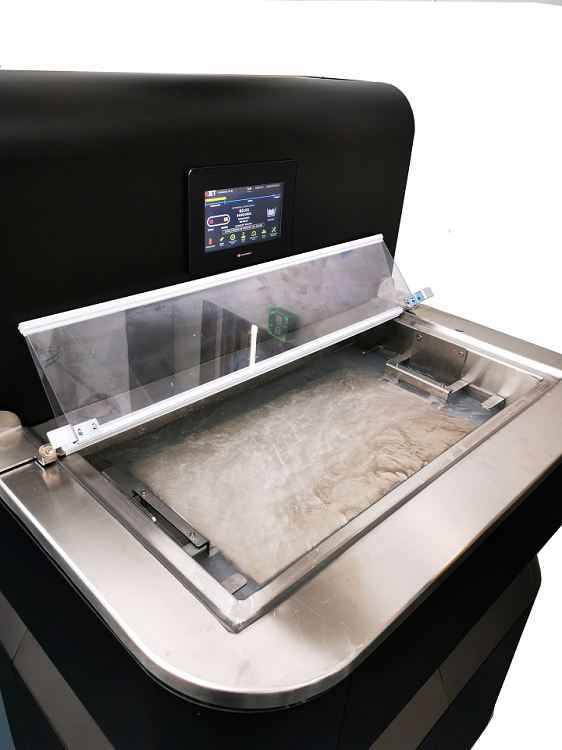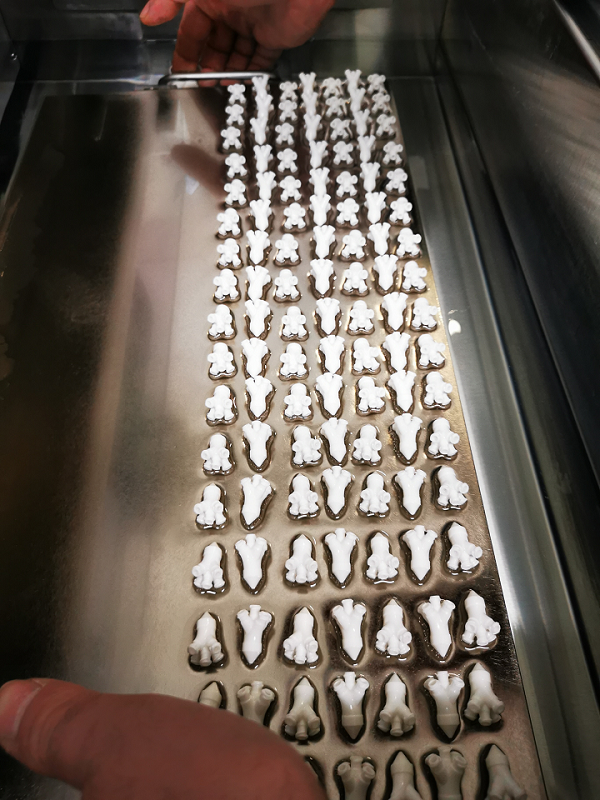Israel-based additive manufacturing solutions provider XJet, which focuses on both metal and ceramics 3D printing—sometimes even combined in the same machine—introduced something new this week in its SMART station, which was launched to automate the post-processing of its 3D printed ceramic parts. SMART, which stands for Support Material Automatic Removal Technology, works with all of XJet’s Carmel additive manufacturing systems, and will help manufacturers achieve repeatable, low-cost production using its NanoParticle Jetting (NPJ) technology.
“SMART ensures a repeatable high-yield process that significantly reduces cleaning time and costs while eliminating the need for expert operator,” XJet’s website states about the SMART station.
In order to ensure automatic end-to-end 3D printing with XJet’s technology, the user-friendly SMART station automates the removal of the company’s soluble support materials, which means the printing process is less dependent on a human operator. Weighing in at 100 kg when it’s empty, the water-based station uses intelligent algorithms to suggest the appropriate removal program for a tray of ceramic parts by taking into account parameters like the flow rate and water level.
“One of our beta customers has reported a 90 percent reduction in cleaning time and hassle using the XJet SMART station, so we’re delighted with the results! Additive manufacturing is supposed to offer true design freedom and complex geometries with zero additional cost. Our soluble support material delivers those capabilities – even for tiny cavities. Now with the SMART station our customers can benefit from simple, predictable, low-cost operation,” Dror Danai, XJet’s Chief Business Officer, stated in a press release.
The SMART station builds on what the company’s proprietary NPJ technology offers—the simultaneous jetting of one build material and a different soluble support material, which can now be dissolved quickly and easily from the printed part. This gentle melting away means that all of the part’s tricky geometries and fine details should be safely preserved during post-processing, which gives users the ability to print high-quality parts.
“The SMART station delivers the final missing link in AM. Now XJet’s award-winning soluble support material becomes even easier to remove, making part production really easy and allowing virtually any geometry as water can access even the smallest channels that XJet ultra high-quality printing enables,” Danai said. “This is all part of XJet’s drive to support manufacturers in a true production environment. XJet technology is designed for manufacturers who want to build better parts for real-world applications. We examine the whole workflow to see what can be done to reduce production time, minimize operational costs, and ensure the premium quality of parts is repeatable.”
XJet’s new piece of automated post-processing equipment features a 220/110 volt power supply, a tray size compatible to what the Carmel 1400 printer can offer, and physical dimensions of 90 x 150 x 90 cm. The SMART station can drain 45 liters of water per minute, heat five liters per minute in 30°C, and has a 250 or 500 L/H flow rate system for the reverse osmosis process. However, infrastructure requirements for the necessary water supply are not included with the station.
You can see XJet’s new SMART station for yourself, along with a variety of 3D printed samples that have been cleaned in the station, at next week’s RAPID + TCT in Chicago, Illinois and at formnext in Frankfurt, Germany, from November 16-19.
Subscribe to Our Email Newsletter
Stay up-to-date on all the latest news from the 3D printing industry and receive information and offers from third party vendors.
Print Services
Upload your 3D Models and get them printed quickly and efficiently.
You May Also Like
Havaianas Collaborates with Zellerfeld to Launch 3D Printed Flip-Flops
The shoe of the summer is undoubtedly the flip-flop. Easy on, easy off, your feet won’t get sweaty because there’s not much material, and they’re available in a veritable rainbow...
UCLA Researchers Develop 3D Printed Pen that May Help Detect Parkinson’s Disease
Diagnosing Parkinson’s disease is difficult. Often, early symptoms of the progressive neurological condition may be overlooked, or mistaken for signs of aging. Early diagnosis can help save lives and improve...
Printing Money Episode 30: Q1 2025 Public 3D Printing Earnings Review with Troy Jensen, Cantor Fitzgerald
Printing Money is back with Episode 30, and it’s that quarterly time, so we are happy and thankful to welcome back Troy Jensen (Managing Director, Cantor Fitzgerald) to review the...
Heating Up: 3D Systems’ Scott Green Discusses 3D Printing’s Potential in the Data Center Industry
The relentless rise of NVIDIA, the steadily increasing pledges of major private and public investments in national infrastructure projects around the world, and the general cultural obsession with AI have...



































